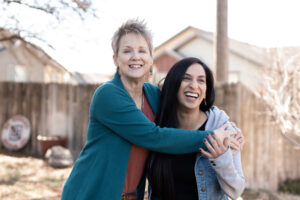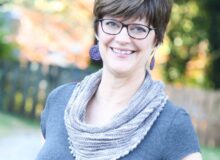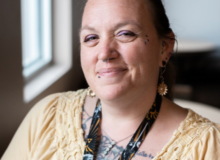
Did you know that
—historically and to this day—
a majority of Circles USA participants are women?
85% of Circle Leaders in 2023 were women; and women and girls make up the lion’s share of active family learners in CUSA’s Ally and Circle Leader training, financial literacy programs, volunteers, and staff. Our national leadership team comprises four women and one gender non-binary staffer, plus a 3-1 female majority Board of Directors. One of these women, Joan Kuriansky—whose recent post “Circles Honors Women’s History Month: Call to Action by Board Member Joan Kuriansky” launched our WHM series—is best known to the CUSA community of practice as the author of our six-point Policy Platform. In every respect, women shape the language, direction, and collective spirit of CUSA’s mission of building community to end poverty.
As well as highlighting the accomplishments of our many outstanding women participants throughout the month, on March 12 we celebrate Equal Pay Day in the U.S. Despite meaningful advancements in many aspects of gender equality, data reminds us that poverty still disproportionately affects women in the U.S. and globally.
In 2022, American women were typically paid 83 cents for every dollar that a white, non-Hispanic man earns in the same role. This discrepancy is even greater for women of color. [Source] U.S. poverty rates are also significantly higher for unmarried women, especially those with children, with nearly one-in-four living below the poverty line. [Source]
 Projects like the Women’s Legal Defense and Education Fund’s “Legal Momentum” examine anti-poverty work through a gendered lens, with the goal of keeping women and children (who make up the majority of Americans living in poverty at 70 percent) at the center of policy. Further, “Women in America are still 35 percent more likely than men to be poor in America, with single mothers facing the highest risk. Currently, 35 percent of single women with children live and raise their families in poverty.” [Source]
Projects like the Women’s Legal Defense and Education Fund’s “Legal Momentum” examine anti-poverty work through a gendered lens, with the goal of keeping women and children (who make up the majority of Americans living in poverty at 70 percent) at the center of policy. Further, “Women in America are still 35 percent more likely than men to be poor in America, with single mothers facing the highest risk. Currently, 35 percent of single women with children live and raise their families in poverty.” [Source]
Globally, it’s estimated that 383 million women and girls live on less than $1.90 a day—roughly 15 million more than the number of men and boys. [Source] In the UN’s gender snapshot from 2023, they predicted that, unless we course-correct, “340 million women and girls will be living in extreme poverty by 2030.” Their report named food insecurity, maternal mortality, and education access and completion as some of the primary challenges facing women across the globe. [Source]
Poverty’s impact on women doesn’t show up just in obvious, measurable ways. It can also affect their confidence, social and domestic independence, and political autonomy.
A recent study by Heather McCulloch and Céline Apollon published by The 19th (an independent, nonprofit newsroom reporting on gender, politics and policy) asked women across the country, “What would the economy look like if it worked for you?”
Among the top obstacles they named were:
|
|
The most common solutions named by women include:
|
|
These solutions span issues that impact low-income women and families in both domestic and work arenas. Perhaps this is why multidimensional solutions like Circles are effective. The Circles model takes into account the whole individual and the whole family. This holistic approach equips Circle Leaders with practical financial literacy tools and opportunities to advance systemic change, while surrounding them with invaluable community support.

“Our Circles program starts with a class,” says Sherri Brown, executive director of Circles Troup County, GA. “They come to us, we sit down and talk with them to make sure we’re all on the same page. And then we put the support systems, the people, the encouragement, the cheering in place so people can be successful.”

Amber Edwards, a former trainer with Circles Green Bay, WI, has experienced many of the personal and professional transformations that come with long-term investment in the Circles community of practice.
“My hope,” Amber says, “Is that there will be a pocket of people in every community that’s willing to advocate for changes. Your advocacy is the way to make change, because the more eyes you have on these problems the closer we get to a solution. Ultimately, as a community, as a nation, we have to decide that we deserve better. That’s the key to advocacy, that’s the key to change.”
…
Learn more about CUSA’s Women’s History Month activities on our blog: “Circles Honors Women’s History Month: Call to Action by Board Member Joan Kuriansky”